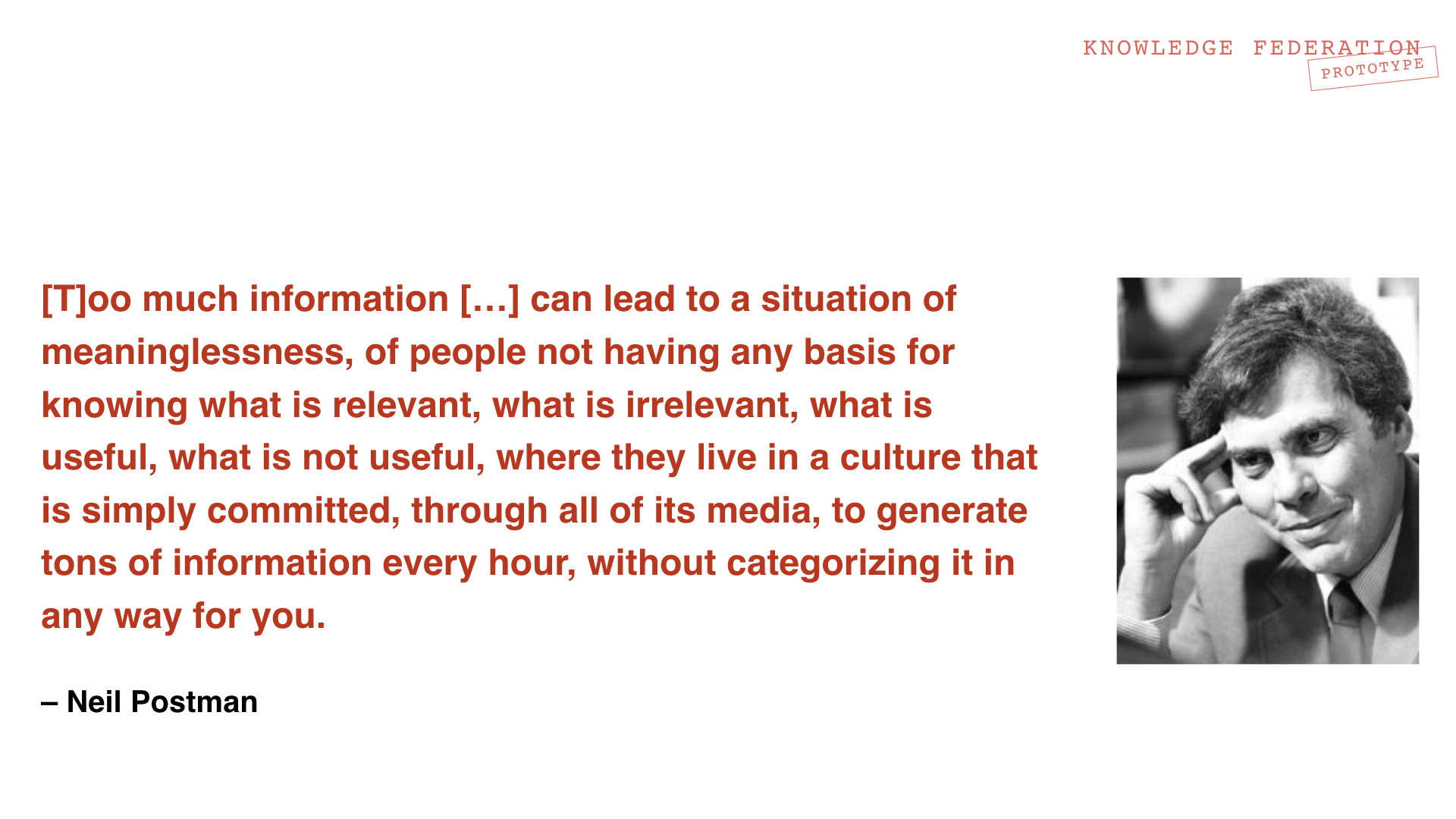Difference between revisions of "Holotopia"
From Knowledge Federation
m |
m |
||
| Line 11: | Line 11: | ||
<div class="col-md-3"></div> | <div class="col-md-3"></div> | ||
<div class="col-md-6"> | <div class="col-md-6"> | ||
| − | <p> | + | <p>What if we handled information as we handle most other human-made things—if we adapted it to the core purposes that need to be served? Imagine a human world where XXXX providing Such as providing <em>correct</em> meaning. What would this information be like? In what way would it be created? What consequences would it have?</p> |
<p>Etc.</p> | <p>Etc.</p> | ||
| Line 18: | Line 18: | ||
<div class="col-md-3"> | <div class="col-md-3"> | ||
[[File:Modernity2.jpg]] | [[File:Modernity2.jpg]] | ||
| + | <small>Some caption or other</small> | ||
</div> </div> | </div> </div> | ||
Revision as of 15:17, 22 March 2020
[[File:Holotopia
Modernity needs lightbulbs, not candles
What if we handled information as we handle most other human-made things—if we adapted it to the core purposes that need to be served? Imagine a human world where XXXX providing Such as providing correct meaning. What would this information be like? In what way would it be created? What consequences would it have?
Etc.


